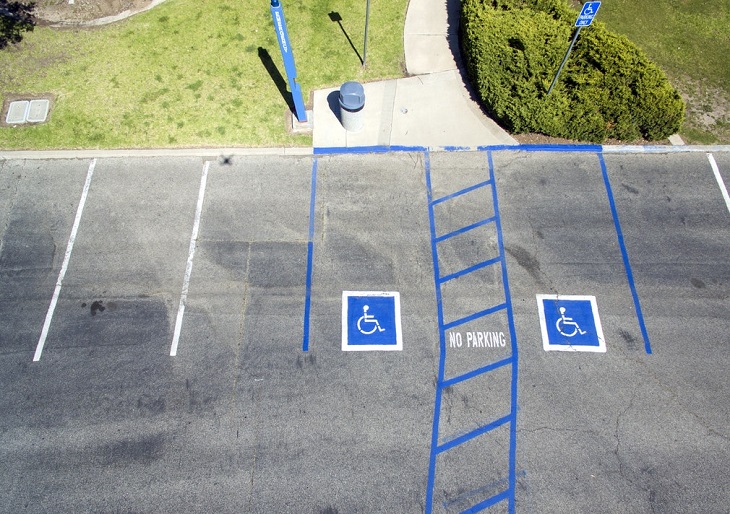Handicap parking in Texas comes with a lot of rules and regulations that everyone with a placard should be aware of. These rules are designed to help those with limited mobility get to where they need to go with ease. The parking regulations for people with handicap placards vary from place to place in Texas, but for the most part, disabled parking is accessible and free. So can you park for free at a meter with a handicap placard in Texas? And if so, where? Let’s find out.
What are the requirements for handicap parking in Texas?
To be able to park in Texas with a handicap placard, there are some criteria that you must first meet. Any of the following will qualify you for a disabled parking permit:
- Inability to walk for 200 feet without resting
- Inability to walk without an assistance device
- Requires a wheelchair
- Restricted from walking because of a lung disease
- Uses portable oxygen
- Has a cardiac condition that causes limitations
- Limited mobility due to arthritic, neurological, or orthopedic conditions
- Foot disorders that limits the ability to walk
- Other health disorders deemed suitable by licensed health care professionals
You are also required to provide the signature of a medical provider on one of the approved forms that proves you require a handicap placard. The physician that signs off can be located in Texas or adjoining states such as Arkansas, Louisiana, New Mexico, or Oklahoma.

What are the rules for handicap parking spaces in Texas?
There are several rules that people must abide by when it comes to handicap parking in Texas. One specific law centers around placard expiration. If a person has parked in a spot and their placard is expired, they will have a 20 working day grace period where the person will be able to have the citation dismissed during that time.
People with up-to-date placards are allowed to park in a handicap spot for an unlimited amount of time, provided the vehicle is being used as a mode of transportation for a person with a disability. This law does not protect people against any fees or penalties that may be given by government or by a governmental unit for parking meters, in a parking lot or garage, or at a municipal airport. Those with handicap placards are still required to pay those parking fees.
There are certain exceptions to parking fees, though. For example, disabled veterans, or those who have received a Congressional Medal of Honor, Purple Heart, Legion of Valor, or Legion of Merit license plates, are exempt from parking fees. Prisoners of war and Pearl Harbor survivors are also exempt from those parking fees.
Who can park in handicap parking in Texas?
Everyone with a valid handicap placard is able to park in the handicap parking areas in Texas. There are two types of handicap placards available: a blue placard and a red placard. The blue disabled parking placard is given out to those who have a disability that is permanent in nature. They are valid for use in handicap parking zones for a total of four years. After the four years has elapsed, the placard will need to be renewed. Upon renewal, evidence of eligibility will not be required.
The red placard is given out to people with disabilities that will heal or improve over time – for example, temporary injuries that limit a person’s mobility. Upon receiving a red placard, a person can use it for up to six months (or how long the disability lasts prior to the expiration of the permit) to park in any handicap parking spot. If the disability lasts less than six months, the placard is no longer valid. If six months has elapsed and the disability is still affecting a person’s mobility, they can renew the placard with a doctor’s letter or a prescription.

Is handicap parking free in Austin?
Although parking in a handicap spot isn’t always free for everyone with a placard, in Austin, a person with a handicap placard or license plate is able to park in general metered spots without having to pay for parking fees. The only catch is that the person parking cannot exceed the time limit of the spot, or they may face penalties.
Featured image by Tomek Baginski on Unsplash







